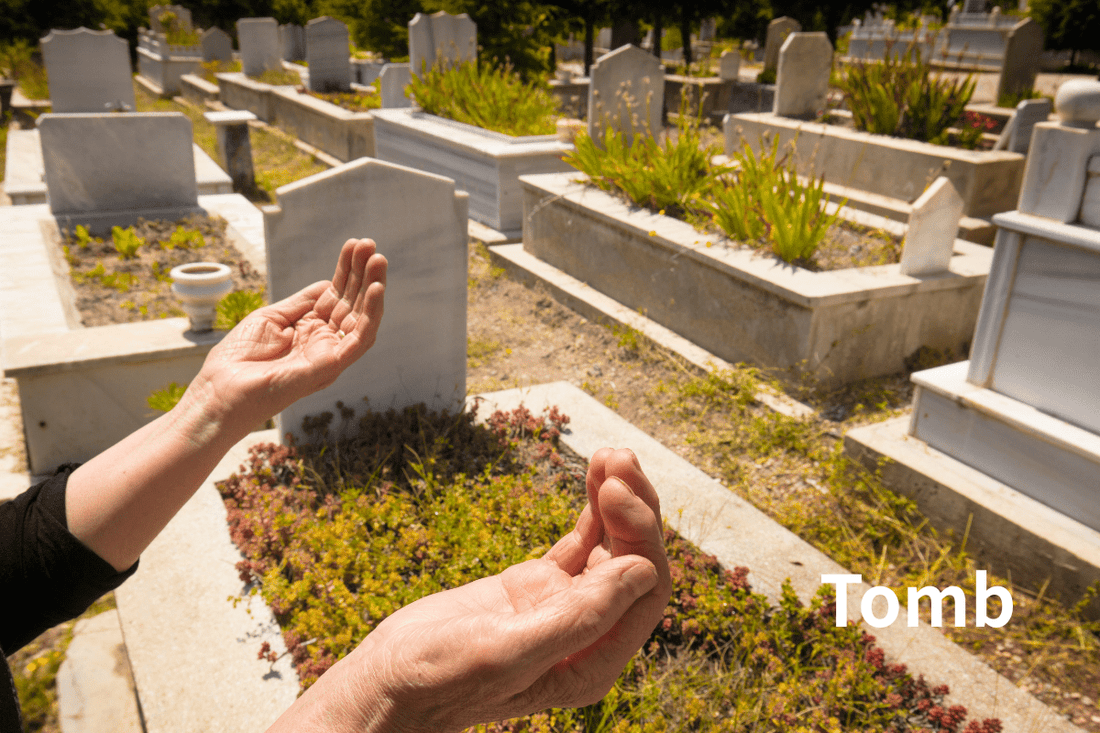
Stone or Concrete? How the World Builds Graves — And Why Japan Still Chooses Granite
Share
Across cultures, graves reveal how people think about memory, time, and nature. While many countries adopted concrete in the 20th century for cost and speed, Japan’s mainstream remains natural stone—especially granite. This article compares materials worldwide, traces when commoners in Japan began building family graves, and explains today’s shifts such as tree burials and “grave closing.”
When Commoners in Japan Began Building Family Graves

In Japan, gravestones were not always exclusive to elites. From the 1600s (Edo period), the temple registration system required every family to be affiliated with a temple. This meant that commoners, for the first time, began establishing family graves. At first, these were not always made of stone—wooden markers and earthen mounds were common.
By the late 1800s (Meiji era), advances in stone cutting and nationwide distribution enabled more families to choose stone monuments, though granite was still not universal. It was only after the postwar decades of the 1950s–1980s, during a period of rising living standards, that granite gravestones spread nationwide and became the default. In short, the idea of family graves began in the 1600s, expanded with stone technology in the 1800s, and finally solidified as granite-based in the postwar 20th century.
What Different Countries Use: A Global Comparison

| Region / Country | Main Material | Typical Features | Durability (approx.) |
|---|---|---|---|
| Japan | Granite, andesite (concrete only for foundations) | Since the 1600s, commoners had family graves (initially wood or soil); after the 1950s granite became mainstream nationwide | Granite: 100+ years; Concrete: typically 30–50 years |
| United States | Granite, marble, concrete | High-end stone monuments coexist with low-cost concrete markers; diversity is key | Stone: centuries; Concrete: decades (varies) |
| Brazil | Concrete | Box-shaped tombs, often painted white or decorated with tiles; vertical cemeteries in cities | 30–50 years with maintenance |
| Mexico | Often concrete, sometimes stone | Colorful, ornate tombs tied to Día de los Muertos; materials vary by region | Depends on material and upkeep |
| Philippines | Concrete | Apartment-style communal ossuaries in crowded urban cemeteries | ~30–50 years |
| Urban China | Concrete core with granite panels | Stone-like exteriors, but concrete is used internally to save space and cost | Exterior: long-lasting; Interior: shorter lifespan |
| Africa (various countries) | Concrete | Concrete dominates for economy and availability; painted finishes add individuality | Durability depends on local climate and workmanship |
How Cultures Value Materials
- Natural stone graves: signal endurance, craft, and continuity with nature; granite and marble often last for centuries and readily become cultural heritage.
- Concrete graves: emphasize economy, speed, and urban practicality; decorative finishing can strongly reflect local aesthetics.
This is not a hierarchy. Each choice reflects a society’s history, land use, and family structures.
In Japan, Granite Remains the Mainstream


In Japan, natural stone—especially granite—remains the mainstream for family gravestones. Concrete is widely used for foundations and for the structure of communal facilities, but stone shops do not sell concrete gravestones. Although I do not deal in gravestones myself, most Japanese stone shops that do not specialize in statues or lanterns primarily provide granite gravestones. Since the 1600s, the cultural equation “grave = stone” began to take shape, but it was only after the 1950s–1980s that granite became firmly established nationwide.
New Trends: Tree Burials and “Grave Closing”

Recent years have brought visible change. Tree burials (jumokusō)—part of the global natural or green burial movement—are now being adopted by more modern Japanese families. Introduced in Japan in 1999, they place remains beneath trees or communal greenery to symbolize a return to nature.
At the same time, haka-shimai (“grave closing”) is spreading. Families who can no longer maintain ancestral graves dismantle them, return the plot, and transfer remains to communal memorials or ossuaries. These shifts reflect smaller households, urban migration, and the costs of upkeep. In 2022, official statistics recorded more than 150,000 such cases nationwide.
Even so, the mainstream in Japan remains natural stone. The industry is adapting to new needs while preserving the cultural core that associates remembrance with granite.
Conclusion
Globally, graves tend to split along two lines—stone and concrete—because societies balance permanence, cost, and space differently. Japan’s path has been consistent: commoners began building family graves from the 1600s, stone monuments expanded in the 1800s, and granite became universal after the 1950s. New options like tree burials and grave closing show that Japan is evolving—yet the idea that “stone holds memory” remains remarkably strong.
FAQ
Q1. Why is granite preferred in Japan?
It offers long-term durability, a dignified appearance, and deep cultural association with remembrance and craft.
Q2. Is concrete ever used in Japanese graves?
Yes—for foundations and for the structures of communal facilities. However, concrete gravestones are not sold by stone shops in Japan.
Q3. Are tree burials replacing stone graves?
They are growing, especially in cities, but remain an alternative. Natural stone gravestones are still the mainstream choice.
